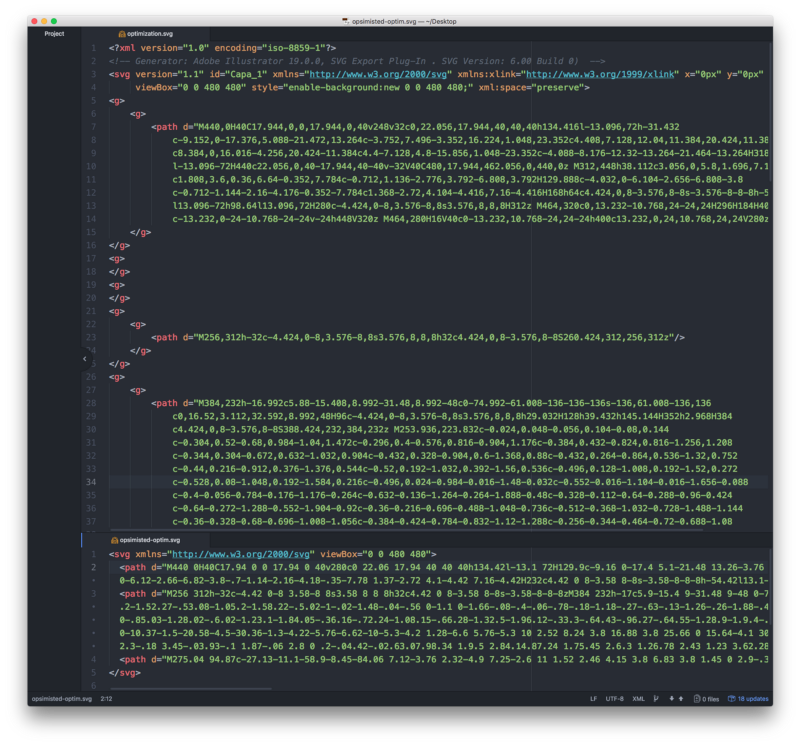
I wanted to be able to optimise a directory of SVG with SVGO. Currently I would optimise them either one at a time using Jake Archibald’s…
I wanted to be able to optimise a directory of SVG with SVGO. Currently I would optimise them either one at a time using Jake Archibald’s awesome online GUI for SVGO (if I felt I needed a lot of control) or using a Gulp task. As I’m trying to write more blogs and make Codepen’s I wanted a way to bulk optimise a multiple of SVG without using Gulp. I looked at SVGO Docs to find out more about the Command Line Interface tool.
Jump to heading SVGO CLI
SVGO is a Node based tool for optimising SVGs. It has a CLI tool that allows you to optimise one or multiple SVGs. For example if you wanted to optimise a directory of SVGs using the default config options you’d just have to use this command;
svgo -f /path/to/svgs/dir
It’s that easy! They have loads of really useful options, check out the docs for more details - SVGO CLI docs.
Jump to heading Creating my own config file
I wanted to be able to optimise a directory of SVGs by removing;
- All classes, Id’s and data-name attributes (I add my own using a text editor)
- CSS styles
- Width & height attribute
- Unnecessary
<g>elements
I created my own config.yml file that uses a series of SVGO’s plugins. This file can be called whatever you want, I have called mine svgo-config.yml.
plugins:
— removeStyleElement: true
— removeTitle: true
— removeDesc: true
— removeUselessDefs: true
— removeDimensions: true
— removeRasterImages: true
— collapseGroups: true
— cleanupNumericValues: { floatPrecision: 1 }
— cleanupIDs: true
— removeEmptyContainers: true
— removeEmptyAttrs: true
— cleanupAttrs: true
— removeAttrs: { attrs: ‘(class|id|data-name)’ }
If I wanted to optimise a directory of SVGs I would run; svgo -f /path/to/svgs/dir svgo-config.yml from the same directory as the custom config file.
Jump to heading Using bash function to optimise directory using my SVGO config file
While I worked at Mr B & Friends my awesome college Hannah had the most complete .bash-profile I’ve ever seen, it’s a work of art. She showed me how to use bash script functions. I’m not going to take a deep dive into how to do this but if you want to know more check out this article. The reason I need to use a bash script function instead of just a bash script alias is that an alias can’t accept arguments in the middle of the command. The path to dir of SVGs is the 3rd or 4th parameters so I needed to use a function.
function svgoFunction() {
svgo -f $1 — config=/Users/user-name/.bash-scripts/config-files/svgo-config.yml
}
alias svgo-config=’svgoFunction $1'
This bash script function has a single argument (that confusingly isn't written inside the functions parenthesise). This argument is the path the the directory that I want to optimise. I hard coded the absolute path the my custom config file as this won’t be moving. While this file is on my computer it could be in Dropbox/Google Drive and therefore could be used by any of my computers.
Now all I do to optimise a directory is call my alias;
svgo-config path/to/svg/dir
Thanks for reading! Any questions leave a comment below or please get in touch. Here is a link to code used in this article as a gist.